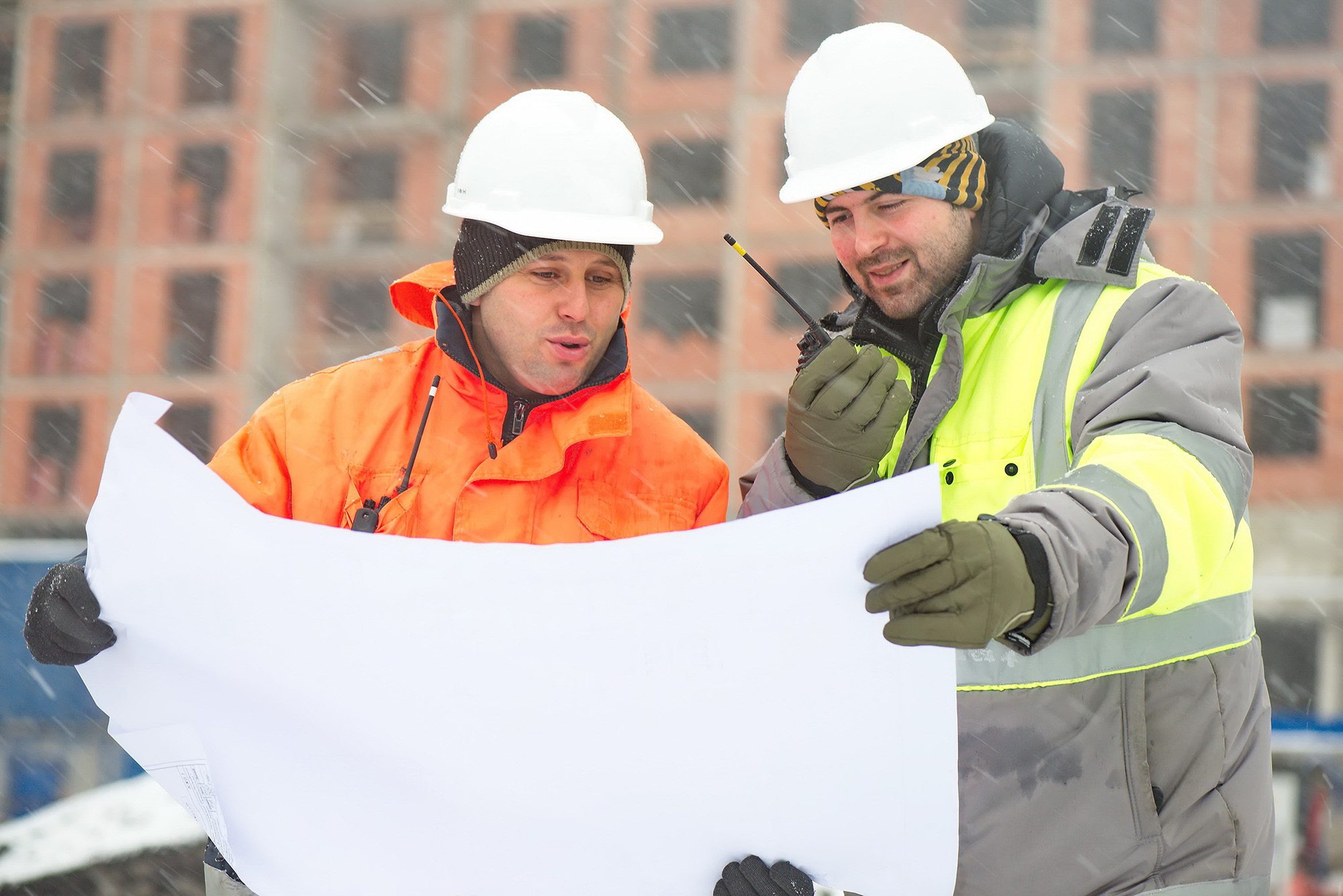 Winter weather often makes it hard for outdoor workers to keep warm on construction sites. Those who don’t take the necessary precautions to stay warm are at risk of hypothermia, trench foot, frostbite or chilblains.
Winter weather often makes it hard for outdoor workers to keep warm on construction sites. Those who don’t take the necessary precautions to stay warm are at risk of hypothermia, trench foot, frostbite or chilblains.
With bitterly cold weather emerging during this time of year, those who work in blustery winter conditions can be in danger if not protected. Here are tips to stay safe and warm while working outside this winter:
1. Wear the right clothing
It’s important to buy quality warm clothing if you’re someone who works outside. Thermal undergarments, insulated pants, coats and overalls help. Coats should extend below the waist, in the event of bending and reaching, potentially exposing your midsection.
All clothing should allow adequate blood flow. If you get sweaty, consider removing a layer because inactivity after sweating can cause you to become cold again.
Make sure boots are thick and properly insulated. Doubled-up socks will keep your feet warm and dry.
2. Carry an appropriate change of clothes
Your clothes can get wet quickly. Have a dry change of clothes and spare blankets handy.
3. Wear proper gloves
Many outdoor tasks require finger dexterity. Consider choosing wind protection gloves. Leather is very helpful in blocking the wind, and the thin, insulated layer allows you to move your fingers accordingly while remaining warm.
Not only is it important to always wear gloves during winter, but they should fit perfectly and have good insulation.
4. Keep your feet and head covered
Cold weather can be especially harmful in these areas. Wear insulated and water-resistant boots, as well as a warm hat and, if necessary, a facemask. Make sure your ears are covered.
5. Keep moving
If you stand still during downtime, you will likely start to feel cold. Do some form of physical activity, such as stretches, jumping jacks or pacing.
6. Practice regular winter education
Regular winter education serves as a great safety reminder for employees who work outdoors. It also encourages employees to keep one another accountable.
7. Prepare your area before working
When facing winter elements, prepare surfaces where there will be heavy foot traffic. Shovel snow, use ice melt and break away ice chunks as necessary.
8. Limit the amount of time you’re exposed to cold temperatures
Staying indoors will keep you warmer, so if there’s no reason to be working outside, don’t. Workers who aren’t used to freezing temperatures can be more susceptible to health risks associated with cold stress.
9. Work in pairs
The symptoms mentioned earlier may be subtle at first, but can quickly become serious. It helps to work in teams of at least two to watch for the signs. Intense shivering and confusion are among the most common signs. It’s good practice to have two-way radios handy in case of an emergency.
10. Consume hot beverages
It helps to drink something hot every couple of hours. Drinks like coffee and tea not only keep you warm, but fight the lethargy that cold causes.
11. Eat soup for lunch
Soup warms your body, as well. Hot chicken noodle soup is good because it’s filling and warm, with few calories.
12. It’s OK to take regular breaks
In today’s go-go world, some may feel guilty about taking breaks. However, with cold temperatures, not taking breaks can be dangerous. It’s OK to head indoors and maintain a healthy body temperature. You can even use this time to change your clothing.
Utilizing employee warming stations and implementing shorter shifts are also helpful tactics in fighting cold on the job site.
Keep warm on construction sites
It’s not worth risking your health on the job site. Stay warm by taking the necessary precautions when you know cold weather is on its way.
RELATED: Outdoor workers are fighting harmful ultraviolet rays with these easy tips